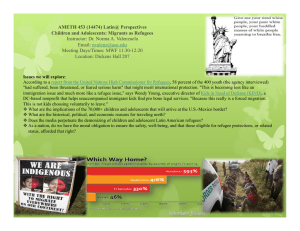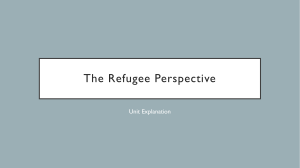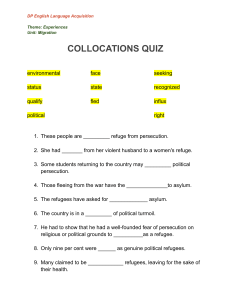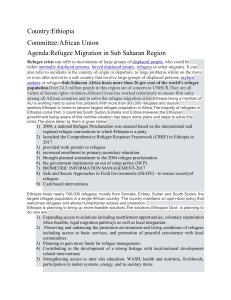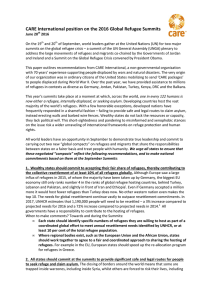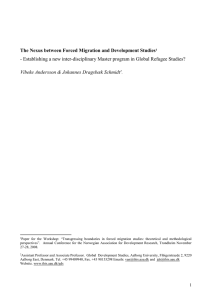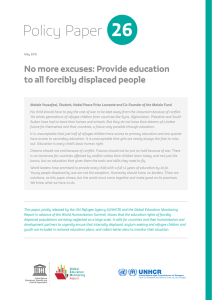Unit 2 Refugees
advertisement
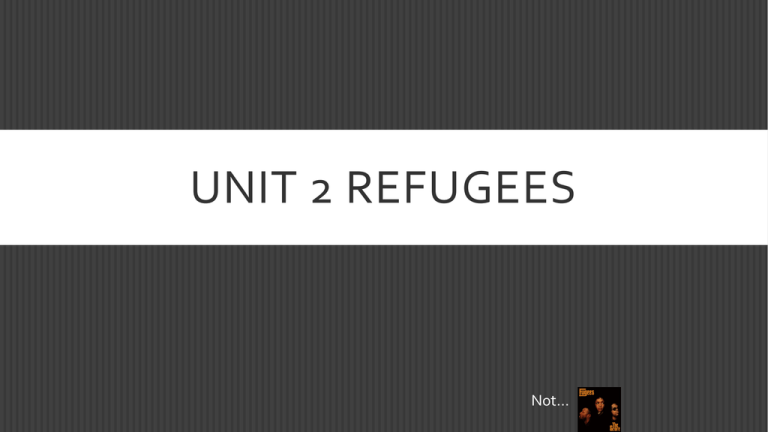
UNIT 2 REFUGEES Not… LEARNING OUTCOME The student will be able to consider multiple perspectives/sides of refugees REFUGEE U.S. government defines refugee as, “any person who is outside any country of such person’s nationality or, in the case of a person having no nationality, is outside any country in which such person last habitually resides, and who is unable or unwilling to return to, and is unable or unwilling to avail himself or herself of the protection of that country because of persecution or a well-founded fear of persecution on account of race, religion, nationality, membership in a particular social group or political opinion.” A person is an asylum seeker until a country calls them a refugee. When a person is displaced within his/her own country they are internally displaced persons People after Hurricane Katrina were internally displaced. DIFFERENT REFUGEE’S There are a number of different crises that have caused large numbers of refugees. Following World War II is when the U.N. established the status of refugee Your Fouberg textbook talks about Sub-Sahara Africa as an area with a large amount of violence, like Sudan, that has forced individuals to move. Food insecurity, such as famine causes refugees, or people to move. Famine often leads to violence even if the food part doesn’t meet the “technical definition.” A number of Palestinians are considered refugees and live in Egypt, but are not Egyptians. SYRIA Syria is presently all over the news because of the refugee crisis occurring there; migrants are heading to Turkey and Europe. Keep in mind that refugees often go to countries that are neighboring, as the people moving may have limited goods or mobility. https://www.youtube.com/watc h?v=RvOnXh3NN9w READ ARTICLES You’ve been assigned an article; they’re all in the HUB, under Refugee Articles. Read the article for the next 15 minutes, take notes. You’re going to be responsible for explaining those articles by the end of class. Pay attention to the following: Who? Where? Why? Concerns? When you’re done reading, read another article, but pay most attention to your own. I’ll tell you when to get into groups and you’re going to explain the who, where, why, and concerns that you learned from your article. After that, discuss whether or not you’d be willing to accept refugees, aware of what the challenges are with the populations and the difficulties that those individuals face.


